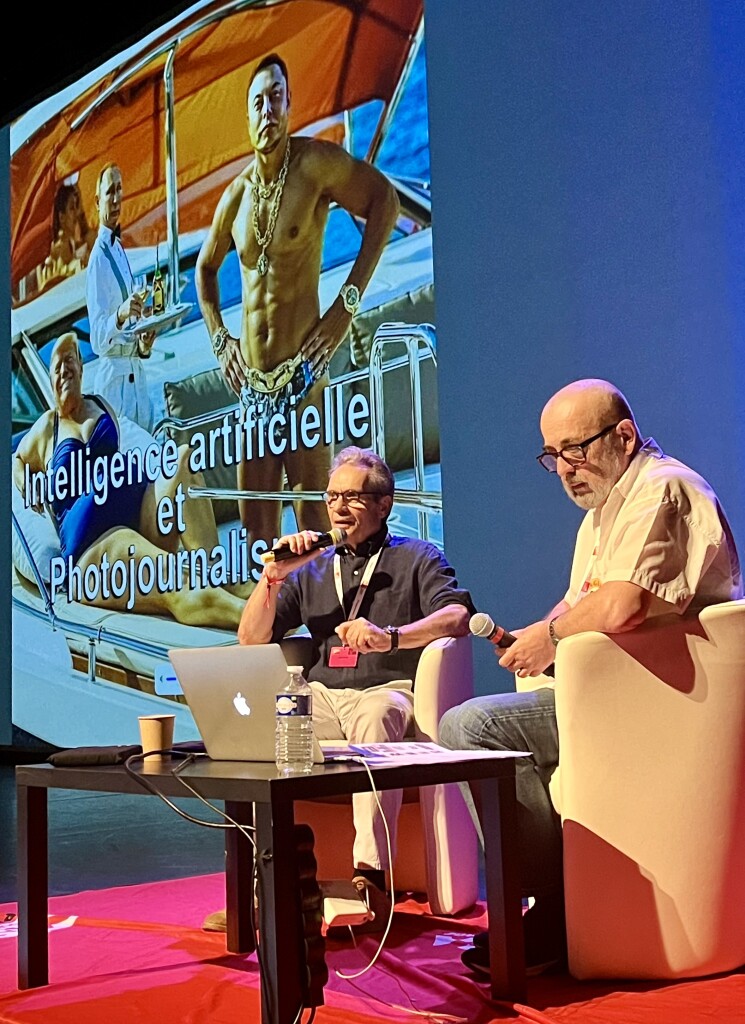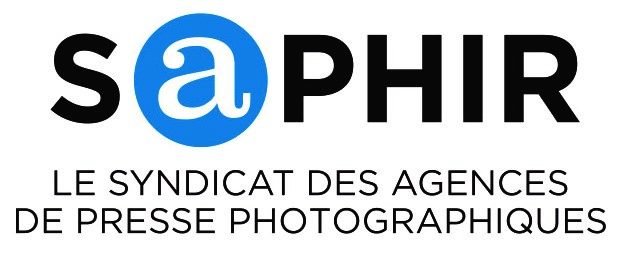Artificial intelligence was a prominent topic at this year’s 36th Visa pour l’Image festival in Perpignan, following its discussion at the previous CEPIC conference. Gilles Courtinat, a journalist for the French magazine ‘Le oeil de l’info,’ and Paul Melcher, a well-known expert in visual technology, initiated a well-attended debate on the subject on Friday at the festival.
Courtinat emphasised, with a long list of examples, that artificial intelligence applied to photos and videos is simply the next level of photo manipulation, which is as old as photography itself. Still, artificial intelligence remains a game-changer in a world where over 60,000 images are captured every second, the vast majority of which are taken on smartphones.
Melcher demonstrated the capabilities of the Magic Editor app on the Google Pixel 8 Pro smartphone, showing how users can convincingly add new elements to their photos, or distort and erase others, simply by inputting text instructions into the software. This makes efficient photo manipulation accessible to anyone.
A year ago, AI-manipulated images were easily identifiable—featuring faces with unnaturally tight skin, limbless bodies, and hands with six fingers. Today, these issues have been completely resolved, resulting in highly convincing images, such as an AI-generated photo of Kamala Harris smiling with a gun in her hand. In fact, they are so realistic that in recent tests, only 61% of participants could correctly differentiate between AI-generated and real images, with 39% incorrectly identifying them in one or both categories.
Melcher also highlighted the benefits of images created from text prompts. For instance, in Barcelona, individuals with memory loss were able to recall visual images through AI-generated pictures. Additionally, the climate movement Fridays for Future utilized an AI-generated headshot of a child in the U.S., clearly labelled as such. This approach helps circumvent issues related to portrait rights and privacy.
Yes, there are already many technological initiatives and solutions to verify and certify the authenticity of images so that the general public will hopefully continue to see the wood for the trees, Melcher said. This comes down to the viewer/consumer being able to recheck the origin and various manipulations of the image, such as the traceability of a delicious piece of meat. But Courtinat still swore by the reliability of established media.
As for the legal implications (Are AI-generated images protected by copyright? Can you buy or sell a licence on them? etc) both gentlemen referred to the voluminous French-language book “IA & Image, Guide Juridique” in which the specialised lawyer Joëlle Verbrugge gives a comprehensive state of affairs.
Furthermore, the subsequent round of questions highlighted the industry’s ongoing concern: Can we ever assure readers and viewers of the authenticity of what they see?
Insights courtesy of Philippe François, Chief Imagery of Belga & CEPIC board member, with photo credits to Belgaimage/Philippe François.









